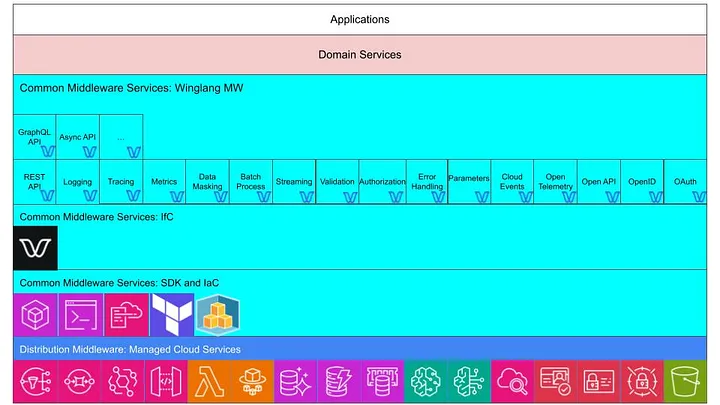Winglang provides a solution for contributing to its Winglibs project. This is the way to go if you only need to wrap a particular cloud resource on one or more platforms. Just follow the guidelines. However, while developing the initial version of the Endor middleware framework, I had different needs.
First, the Endor library is in a very initial exploratory phase—far from a maturity level to be considered a contribution candidate for publishing in the public NPM Registry.
Second, it includes several supplementary and still immature tool libraries, such as Exceptions and Logging. These tools need to be published separately (see explanation below). Therefore, I needed a solution for managing multiple NPM Packages in one project.
Third, I wanted to explore how prospective Winglang customers will be able to manage their internal libraries.
For that goal, I decided to experiment with the AWS CodeArtifact service configured to play the role of my internal NPM Registry.
This publication is an experience report about the first phase, primarily focused on the developer’s experience with my Multi-Account, Multi-Platform, Multi-User (MAPU) environment, which I reported about here, here, and here. Specifically, I configured the AWS CodeArtifact Domain and Repository within my working account and postponed a more elaborate enterprise-grade system architecture to later stages. Let’s start with the overall solution overview.
Solution Overview
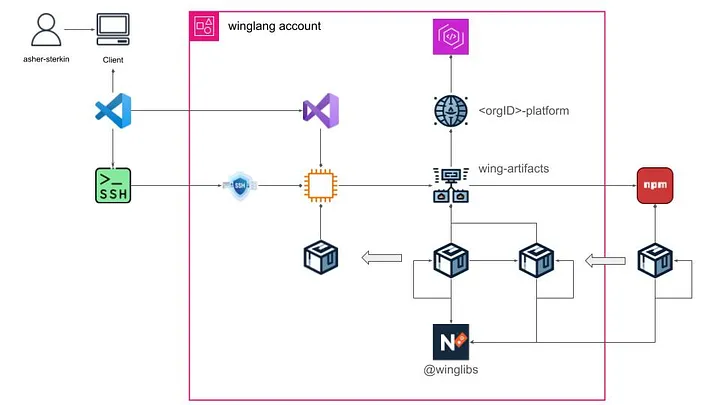
Here is a brief description of the solution:
- Within my
winglangaccount, I created an AWS CodeArtifact Domain tentatively named<organizationID>-platform. - Under this Domain, I created an AWS CodeArtifact Repository tentatively named
winglang-artifacts. - This AWS CodeArtifact Repository is connected to the public npmjs repository, from which all third-party packages, including those from the official Winglibs, are downloaded.
- The AWS CodeArtifact Repository contains two types of packages:
- Those that were developed and published locally.
- Those that were cloned from the external npmjs repository.
- Locally developed packages belong to the
@winglibsNPM Namespace. At the moment, this is a requirement determined by how the Winglang import system works. - The remote EC2 desktop instance is configured to use the AWS CodeArtifact Repository as its NPM Registry using a temporary session token valid for 12 hours.
- As a developer, I communicate with my remote desktop using the VS Code Remote feature, described in the previous publication.
I found this arrangement suitable for a solo developer and researcher. A real organization, even of a middle size, will require some substantial adjustments — subject to further investigation.
Let’s now look at some technical implementation details.
Cloud Resources Allocation
Using Cloud Formation templates is always my preferred option. In this case, I created two simple Cloud Formation templates. One for creating an AWS CodeArtifact Domain resource:
{
"AWSTemplateFormatVersion": "2010-09-09",
"Description": "Template to create a CodeArtifact Domain; to be a part of platform template",
"Resources": {
"ArtifactDomain": {
"Type" : "AWS::CodeArtifact::Domain",
"Properties" : {
"DomainName" : "o-4e7dgfcrpx-platform"
}
}
}
}
And another - for creating an AWS CodeArtifact Repository resource:
{
"AWSTemplateFormatVersion": "2010-09-09",
"Description": "Template to create a CodeArtifact repository; to be a part of account template",
"Resources": {
"ArtifactRespository": {
"Type" : "AWS::CodeArtifact::Repository",
"Properties" : {
"Description" : "artifact repository for this <winglang> account",
"DomainName" : "o-4e7dgfcrpx-platform",
"RepositoryName": "winglang-artifacts",
"ExternalConnections" : [ "public:npmjs" ]
}
}
}
}
These templates are mere placeholders for future, more serious, development.
The same could be achieved with Winglang, as follows:
https://gist.github.com/eladb/5e1ddd1bd90c53d90b2195d080397381
Many thanks to Elad Ben-Israel for bringing this option to my attention. Currently, the whole MAPU system is implemented in Python and CloudFormation. Re-implementing it completely in Winglang would be a fascinating case study.
Configuring npm with the login command
I followed the official guidelines and created the following Bash script:
export CODEARTIFACT_AUTH_TOKEN=$(\
aws codeartifact get-authorization-token \
--domain o-4e7dgfcrpx-platform \
--domain-owner 851725645964 \
--query authorizationToken \
--output text)
export REPOSITORY_ENDPOINT=$(\
aws codeartifact get-repository-endpoint \
--domain o-4e7dgfcrpx-platform \
--domain-owner 851725645964 \
--repository winglang-artifacts \
--format npm \
--query repositoryEndpoint \
--output text)
export REGISTRY=$(echo "$REPOSITORY_ENDPOINT" | sed 's|https:||')
npm config set registry=$REPOSITORY_ENDPOINT
npm config set $REGISTRY:_authToken=$CODEARTIFACT_AUTH_TOKEN
Here is a brief description of the script’s logic:
- Using the AWS CLI, retrieve an AWS CodeArtifact session token (valid for the next 12 hours).
- Using the AWS CLI, the AWS CodeArtifact repository endpoint in a format compatible with NPM.
- Use the NPM
configcommand to set the endpoint. - Use the NPM
configcommand to set up session authentication.
Placing this script in the [/etc/profile.d](https://www.linuxfromscratch.org/blfs/view/11.0/postlfs/profile.html) ensures that it will be automatically executed at every user login thus making the whole communication with AWS CodeArtifact instead of the official [npmjs](https://docs.npmjs.com/cli/v8/using-npm/registry) repository completely transparent for the end user.
Publishing Custom Libraries
Implementing this operation while addressing my specific needs required a more sophisticated logic reflected in the following script:
#!/bin/bash
set -euo pipefail
# Function to clean up tarball and extracted package
cleanup() {
rm *.tgz
rm -fR package
}
# Function to calculate the checksum of a package tarball
calculate_checksum() {
local tarball=$(ls *.tgz | head -n 1)
tar -xzf "$tarball"
cd package || exit 1
local checksum=$(\
tar \
--exclude='$lib' \
--sort=name \
--mtime='UTC 1970-01-01' \
--owner=0 \
--group=0 \
--numeric-owner -cf - . | sha256sum | awk '{print $1}')
cd ..
cleanup
echo "$checksum"
}
get_version() {
PACKAGE_VERSION=$(jq -r '.version' package.json)
}
publish() {
echo "Publishing new version: $PACKAGE_VERSION"
npm publish --access public --tag latest *.tgz
cleanup
exit 0
}
# Step 1: Read the package version from package.json
get_version
PACKAGE_NAME=$(jq -r '.name' package.json)
# Step 2: Check the latest version in the npm registry
LATEST_VERSION=$(npm show "$PACKAGE_NAME" version 2>/dev/null || echo "")
# Step 3: Prepare wing package
wing pack
# Step 4: If the versions are not equal, publish the new version
if [[ "$PACKAGE_VERSION" != "$LATEST_VERSION" ]]; then
publish
else
CURRENT_CHECKSUM=$(calculate_checksum)
# Download the latest package tarball
npm pack "$PACKAGE_NAME@$LATEST_VERSION" > /dev/null 2>&1
LATEST_CHECKSUM=$(calculate_checksum)
# Step 5: Compare the checksums
if [[ "$CURRENT_CHECKSUM" == "$LATEST_CHECKSUM" ]]; then
echo "No changes detected. Checksum matches the latest published version."
exit 0
else
echo $CURRENT_CHECKSUM
echo $LATEST_CHECKSUM
echo "Checksums do not match. Bumping patch version..."
npm version patch
wing pack
get_version
publish
fi
fi
Here is a brief explanation of what happens in this script:
- Step 1: Using the
[jq](https://jqlang.github.io/jq/)command, extract the package name and version from thepackage.jsonfile. - Step 2: Using the
[npm show](https://docs.npmjs.com/cli/v10/commands/npm-view)command, extract the package version number from the registry. - Step 3: Using the
[wing pack](https://www.winglang.io/docs/libraries)command, prepare the package .tgz file. - Step 4: If version numbers differ, publish the new version using the
[npm publish](https://docs.npmjs.com/cli/v10/commands/npm-publish)command. - Step 5: If the versions are equal, calculate the checksum for the current and most recently published package. If the checksum values are equal, do nothing. Otherwise, using the
[npm version patch](https://docs.npmjs.com/cli/v10/commands/npm-version)command, automatically bump up the[patch](https://symver.org/)version number, rebuild the .tgz file, and publish the new version.
Reliable checksum validation was the most challenging part of developing this script. The wing pack command creates a special @lib folder within the resulting .tgz archive. This folder introduces some randomness and can be affected by several factors, including Winglang compiler upgrades. Additionally, the .tgz file checksum calculation is sensitive to the order and timestamps of individual files. As a result, comparing the results of direct checksum calculation for the current and published packages was not an option.
To overcome these limitations, new archives are created with the @lib folder excluded and file order and timestamps normalized. The assistance of the ChatGPT 4o tool proved instrumental, especially in addressing this challenge.
In the current implementation, I keep this script in my home directory and invoke it from a common [Build.mk](http://Build.mk) Makefile used for all libraries (this might change in the future):
.PHONY: all compile-deps build-ts prepare test publish
all: publish
update-deps:
npm install && npm update
compile-ts: update-deps
ifneq ($(wildcard tsconfig.json),)
@echo "tsconfig.json found, running tsc..."
tsc
else
@echo "tsconfig.json not found, skipping TypeScript compilation."
endif
test: compile-ts
wing test -t sim ./test/*.test.w
publish: test
~/publish-npm.sh
Justification
To explain why I chose this particular way of publishing logic, I need to explain my overall project structure, illustrated in the diagram below:
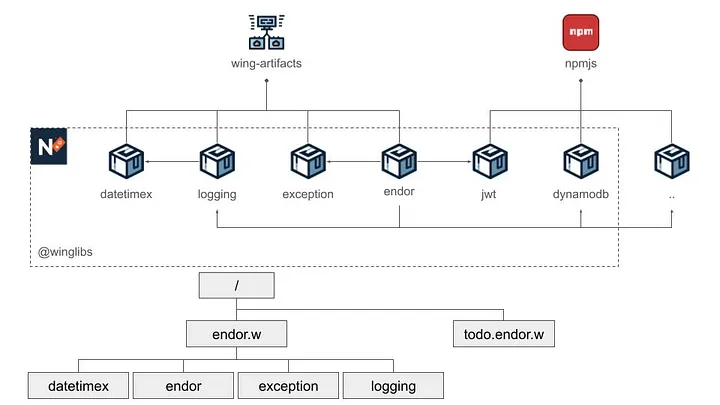
The top of the diagram above reflects the NMP packages involved and their dependencies are depicted at the top, while the bottom part reflects my project folder structure.
The endor package is the ultimate goal of this development activity: an exploratory middleware framework for the Winglang programming language. Its efficacy is validated by a separate todo.endor.w application. Initially, both modules were kept together. However, keeping pure application parts separate from the infrastructure became progressively challenging.
The endor package uses three auxiliary packages logging , exception, and datetimex. These three packages are potential candidates to be contributed to the Winglibs project. However, they are still under active experimentation and development and are kept within the same Github repository.
Additionally, the endor package depends on other packages published on the public [npmjs](https://docs.npmjs.com/cli/v8/using-npm/registry) registry. Some of these packages, such as dynamodb and jwt belong to the same @winglibs namespace, while others do not.
I face a mixed-case challenge: the system already has a modular structure, but all components are under intensive development, requiring instant propagation of changes. As a solo developer and researcher, I still do not need more sophisticated CI/CD solutions, but rather employ a master Makefile to pull everything together:
.PHONY: all \
update_npm \
update_wing \
update_tsc \
make_datetimex \
make_exception \
make_logging \
make_endor
all: update_wing make_endor
update_npm:
sudo npm update -g npm
update_tsc: update_npm
sudo npm update -g tsc
update_wing: update_tsc
sudo npm update -g winglang
make_datetimex:
$(MAKE) -C ./datetimex -f ../Build.mk
make_logging: make_datetimex
$(MAKE) -C ./logging -f ../Build.mk
make_exception:
$(MAKE) -C ./exception -f ../Build.mk
make_endor: make_exception make_logging
$(MAKE) -C ./endor -f ../Build.mk
The todo.endor.w Makefile looks like this:
.PHONY: all update_wing install_endor test_local
cloud ?= aws
target := target/main.tf$(cloud)
update_npm:
sudo npm update -g npm
update_wing: update_npm
sudo npm update -g winglang
install_endor:
npm install && npm update
build_ts:
tsc
test_local: update_wing install_endor build_ts test_app
test_app:
wing test -t sim ./test/*.w
test_remote:
wing test -t tf-$(cloud) ./test/service.test.w
run_local:
wing run -t sim ./dev.main.w
compile:
wing compile ./main.w -t tf-$(cloud)
tf-init: compile
( \
cd $(target) ;\
terraform init \
)
deploy: tf-init
( \
cd $(target) ;\
terraform apply -auto-approve \
)
destroy:
( \
cd $(target) ;\
terraform destroy -auto-approve \
)
This arrangement allows me to keep modules isolated, make changes in several places where appropriate, and perform fully automated build and verification without needing manual version updates within multiple package.json files.
Specifying cross-package dependencies is another point to pay attention to. Here is the endor package specification:
{
"name": "@winglibs/endor",
"description": "Wing middleware framework library",
"repository": {
"type": "git",
"url": "https://github.com/asterkin/endor.w.git",
"directory": "endor"
},
"version": "0.0.19",
"author": {
"email": "asher.sterkin@gmail.com",
"name": "Asher Sterkin"
},
"license": "MIT",
"peerDependencies": {
"@authenio/samlify-node-xmllint": "2.x.x",
"@winglibs/dynamodb": "0.x.x",
"@winglibs/jwt": "0.x.x",
"qs": "6.x.x",
"samlify": "2.x.x",
"ws": "8.x.x",
"inflection": "3.x.x",
"@winglibs/exception": "0.x.x",
"@winglibs/logging": "0.x.x"
}
}
Notice that, unlike traditional formats, all dependencies are specified using the x placeholder without the leading ^ symbol. This is because, with the ^ prefix included, the most up-to-date versions are brought in only for the final todo.endor.w application, whereas I needed them to be used in the dependent modules' unit tests. Using the x placeholder instead does the job.
In summary, while not final, the described solution provides good enough treatment for all essential requirements at the current stage of the system evolution. As the system grows, adequate adjustments will be implemented and reported. Stay tuned.
Acknowledgments
Throughout the preparation of this publication, I utilized several key tools to enhance the draft and ensure its quality.
The initial draft was crafted with the organizational capabilities of Notion's free subscription, facilitating the structuring and development of ideas.
For grammar and spelling review, the free version of Grammarly proved useful for identifying and correcting basic errors, ensuring the readability of the text.
The enhancement of stylistic expression and the narrative coherence checks were performed using the paid version of ChatGPT 4o. The ChatGPT 4o tool was also used for developing the package publishing script and creation of NMP elements icons.
While these advanced tools and resources significantly contributed to the preparation process, the concepts, solutions, and final decisions presented in this article are entirely my own, for which I bear full responsibility.

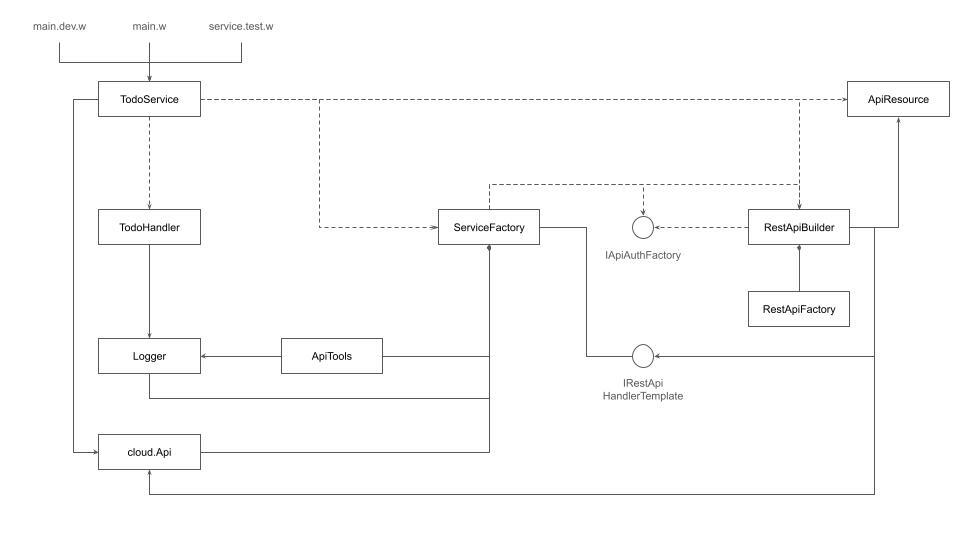
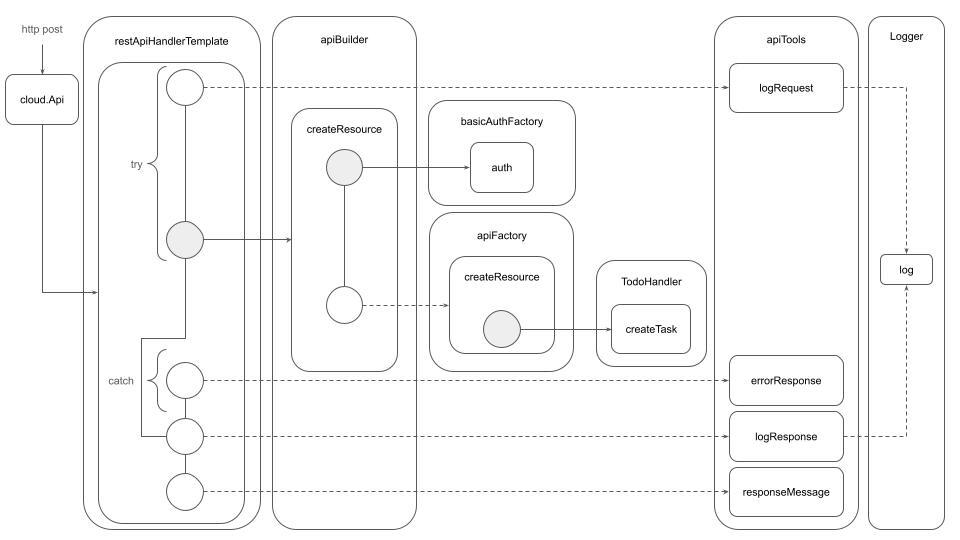 In this diagram:
In this diagram: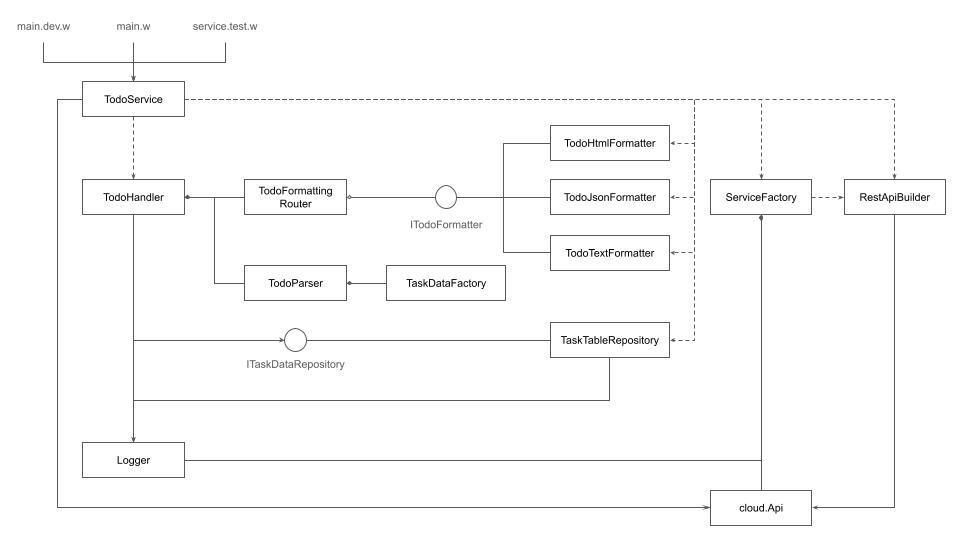
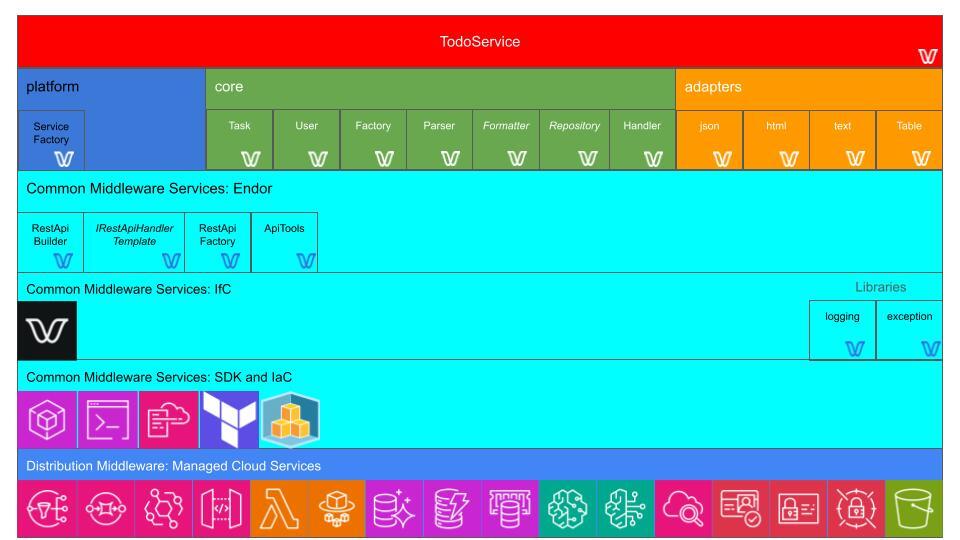
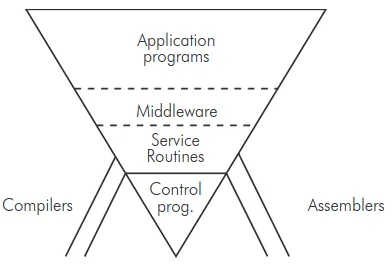
 The concept of Middleware ||traces its roots back to an intriguing figure: the Russian-born British cartographer and cryptographer, Alexander d’Agapeyeff, at the "
The concept of Middleware ||traces its roots back to an intriguing figure: the Russian-born British cartographer and cryptographer, Alexander d’Agapeyeff, at the "


